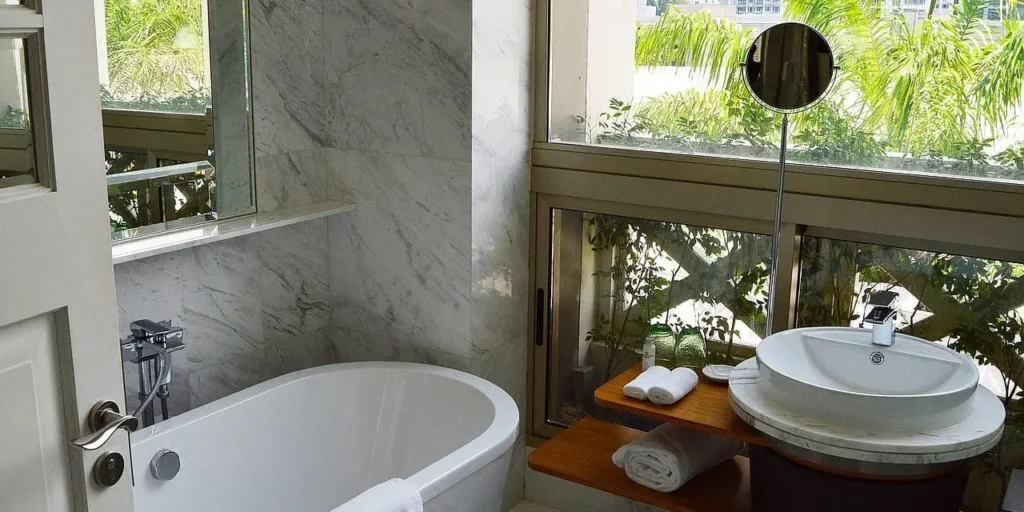
Bathroom Waterproofing Without Chemicals: A Green Approach
Finding ways to waterproof your bathroom while avoiding harmful chemicals is not only possible but also beneficial for both your health and the environment. In today’s world, many homeowners are seeking sustainable and eco-friendly solutions. This article will guide you through the process of achieving bathroom waterproofing without chemicals.

Why Choose Chemical-Free Waterproofing?
The use of chemicals in traditional waterproofing methods can have adverse effects on health and the environment. By opting for chemical-free solutions, you contribute to a healthier home and planet. Additionally, natural materials are often more durable and cost-effective in the long run.
Understanding Traditional Waterproofing Methods
Before diving into chemical-free alternatives, it is essential to understand what traditional waterproofing involves. Typically, these methods use synthetic materials and compounds that can release harmful VOCs (volatile organic compounds). These VOCs can contribute to indoor air pollution.
Eco-Friendly Alternatives for Waterproofing
Natural Sealants
One of the most effective eco-friendly waterproofing solutions is using natural sealants. These products are made from plant-based oils and waxes, providing a safe barrier against moisture.
Recycled Materials
Using recycled materials for bathroom fixtures and surfaces can prevent water damage. These materials are not only sustainable but also provide excellent resistance to moisture.
Proper Ventilation
Ensuring your bathroom is well-ventilated is crucial for preventing moisture buildup. You can achieve this by installing windows or using exhaust fans. Proper ventilation helps in keeping the bathroom dry and mold-free.
Steps to Waterproof Your Bathroom Naturally
Step 1: Assess Your Bathroom’s Needs
Before starting, evaluate the specific needs of your bathroom. Identify areas prone to moisture such as around the shower, bathtub, and sinks.
Step 2: Choose the Right Materials
Select materials that are known for their natural water-resistant properties, such as cork or bamboo. These materials are both sustainable and aesthetically pleasing.
Step 3: Apply Natural Sealants
Apply natural sealants to areas that require additional protection. Ensure you follow the product instructions for the best results.
Step 4: Maintain Regularly
Regular maintenance is key to preserving your bathroom’s waterproofing. Clean surfaces with natural cleaning products to avoid chemical residues.
The Role of Technology in Eco-Friendly Waterproofing
Technology plays a significant role in modern bathroom design. Consider integrating smart devices that monitor moisture levels, helping you maintain a dry and healthy bathroom. For instance, a leak sensor device can alert you to potential water issues before they become significant problems.
Case Studies: Successful Chemical-Free Waterproofing
Many homeowners have successfully implemented chemical-free waterproofing strategies. These case studies demonstrate the effectiveness of natural methods in preserving bathroom integrity and enhancing sustainability.
Challenges and Solutions
While transitioning to chemical-free waterproofing presents challenges, such as higher initial costs and material availability, the long-term benefits outweigh these obstacles. Educating yourself on product options and costs can help you make informed decisions.
Conclusion
Embracing bathroom waterproofing without chemicals is a positive step towards a healthier home and environment. By choosing natural materials and methods, you can achieve effective waterproofing while minimizing your ecological footprint. Explore more about sustainable bathroom design to learn how to integrate eco-friendly practices into your home.

FAQs
What are the benefits of using natural sealants?
Natural sealants are non-toxic, environmentally friendly, and provide effective moisture barriers without releasing harmful VOCs.
Are there any downsides to using recycled materials?
Recycled materials may have higher upfront costs but offer long-term durability and sustainability benefits.
How can I improve bathroom ventilation?
Improving ventilation can be achieved by installing exhaust fans or windows, helping to reduce moisture and prevent mold growth.
This article contains affiliate links. We may earn a commission at no extra cost to you.